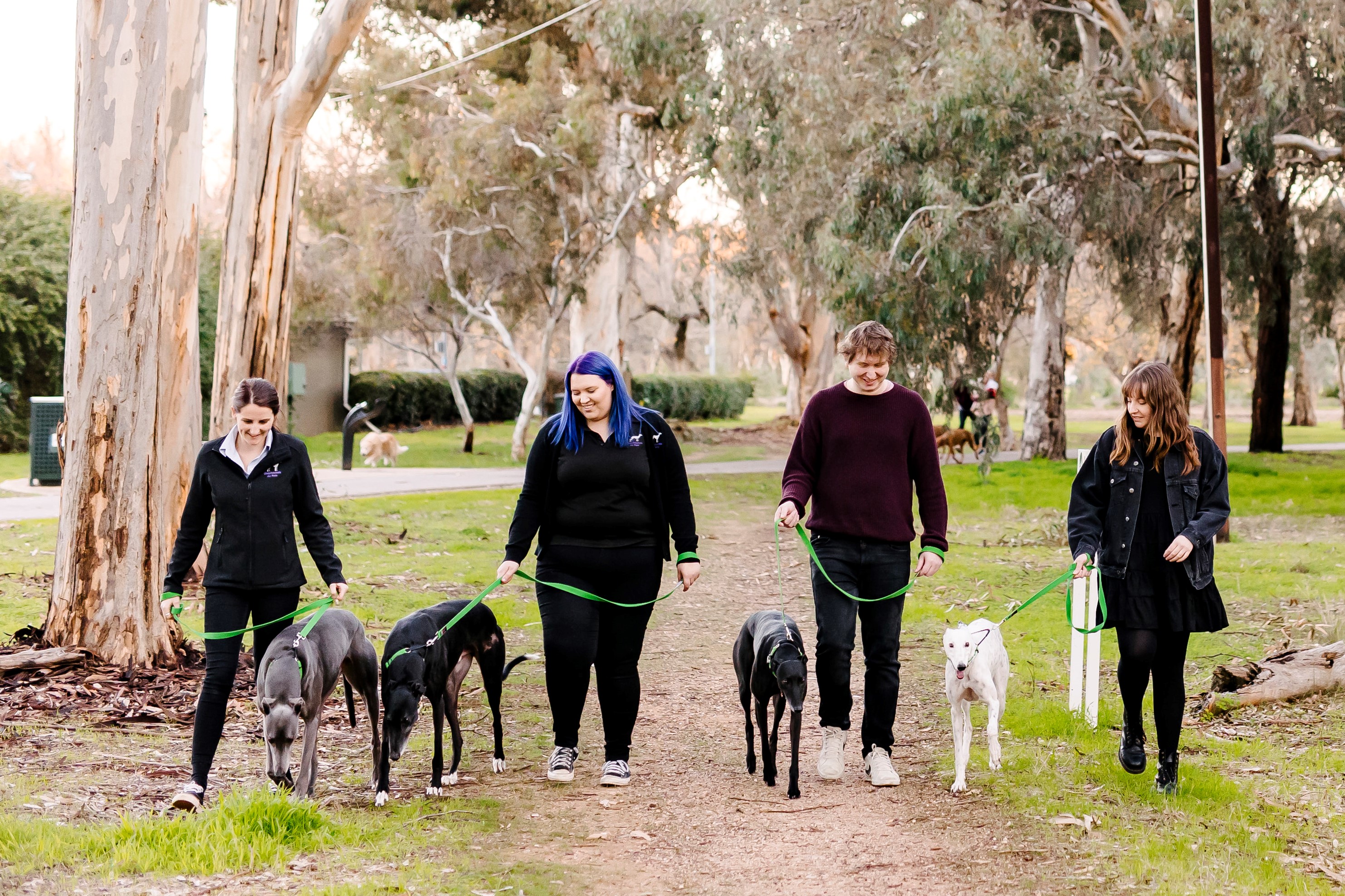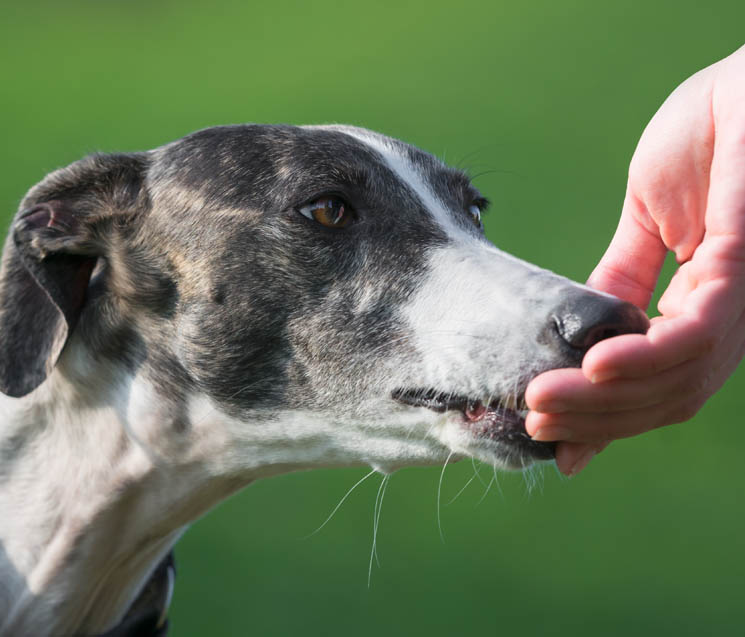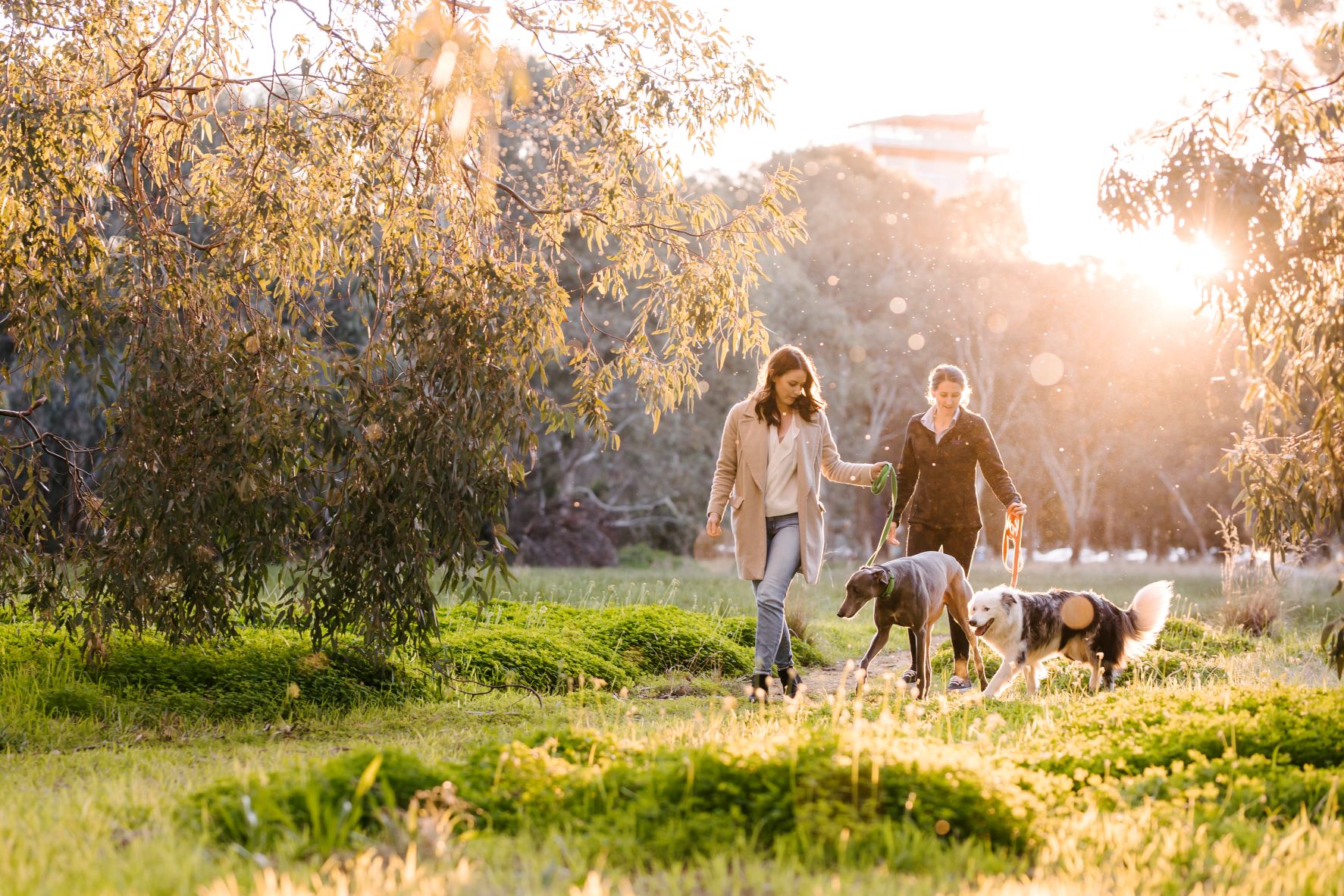How To Minimise Leash Pulling
Mar 01, 2022

It is no fun when you find yourself being dragged along by your greyhound. It's also not fun for them... and certainly isn't good for their neck.
The ideal walking pattern is when a dog walks close to its owner’s hip with a loose leash.
This is primarily trained by keeping treats at hand, and rewarding the dog for related behaviours such as recall, check-ins, nose targeting and loose-leash walking to reinforce good behaviours.
How to Use the Check-In Method
When walking a dog on a leash, one of the best ways to get them to avoid pulling and distractions is the check-in method, which can be used when the dog is excessively pulling.
Checking in means that the dog is making a conscious decision to direct their attention to you. Typically, this is achieved by calling the dog’s name, waiting for them to disengage from what is occupying them and returning to you (sitting is optional). The owner would then reward with a treat then both of you can keep walking.
This encourages them to remain attentive while they're walking on a leash alongside you. Dog owners can use a mixture of treats, verbal commands and sometimes toys.
What to Do When a Dog Freezes
While it is undesirable for a dog to be pulling on leash, it is equally poor-form for the human to begin dragging their dog when it has stopped.
The dog may be stopping to take in smells, as a rest or due to a stress response. If the dog is enjoying the smells, it’s good etiquette to wait for them. In the latter situation, if owners start pulling on their greyhound once it freezes, that can make the situation worse by the physical pressure elevating the anxiety of the dog.
Instead, release pressure on the leash and give your dog time to relax and start moving again. A treat can also help to lure them towards you and away from whatever has made them anxious.
Positive Reinforcement Through Treats & Verbalisation

When training loose-leash walking, it’s important to be consistent.
If you’re using positive rewards, then you also need to be quick to reward the behaviour, within seconds of the good behaviour. After 10-15 seconds, the dog has likely forgotten the action that earned them the treat.
You may also find that highly desirable treats elicit the best response from your dog, so consider picking them up something nice from the deli.
In addition to treats, people can often quickly verbalise the reward by simply saying "yes" or “good” in a timely fashion, or something that indicates to your dog or greyhound that it’s shown the right behaviour or performed the task correctly.
How We Develop Loose Leash Walking for Greyhounds in the GAP Program

Excessive pulling on leash is a suboptimal behaviour that we are conscious to improve when necessary.
Greyhounds that pull respond well to correctly fitted harnesses, walking techniques and other forms of training.
While in our care, all greyhounds are walked daily to assist with leash and walking behaviour training and overall well being.
We take them on group walks and with the aim of developing a nice loose-leash walking pattern, which is helpful for their upcoming domestic life.
Organise A Greyhound Meet and Greet Near You
We are proud to rehome ex-racing greyhounds, part of doing this successfully is reinforcing good behaviours whilst on leash, from first coming into our program to post-adoption.
We love it when potential adopters organise meet and greets with our greyhounds and walk with them around our facilities.
After some time together, you might even form a bond with one of our friendly greyhounds and walk away with a new best friend!
Please use our dogs for adoption page to get started.
Back to all news

